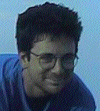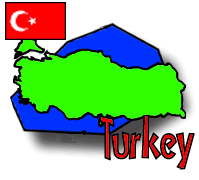Person of the Day: Emperor Constantine
For a brief history of Istanbul, continue reading. Otherwise, return to wherever you were.
Place of the Day: Sea of Marmara
Group Dispatch, February 24-26

[Meanwhile, Corinne and andrEa had arrived in Gelibolu, also known as Gallipoli.]
[Meanwhile, Corinne and andrEa were just arriving in Istanbul...]
[For a brief history of Istanbul, click here.]
Questions? Ask Ethan ![]() !
!
Return to Fast Facts
 |
 |
 |
 |
 |
|
Itinerary/ Journal |
Discussions |
About Turkey |
eDscape Projects |
Scrapbook |
|
|
|
|
|
|
Internet access while in Turkey was provided by Raksnet. |
Copyright 1997-99 BikeAbout. All rights reserved.

